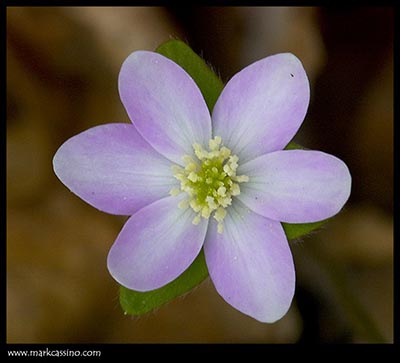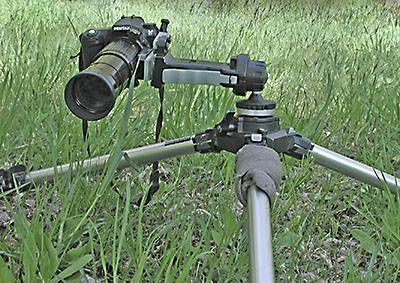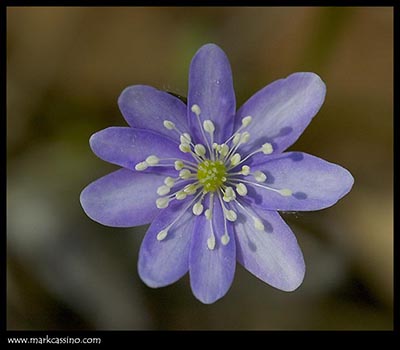Tips and Tricks for Photographing Wildflowers
Note: Updated February 7, 2015. Added notes about live view, focus peaking and articulated LCD screens.
I posted several articles about wildflowers in recent weeks, and as the spring wildflower season comes to a close, it seems timely to comment a little on the techniques used to photograph wildflowers. So here are a few “how to” tips and tricks for photographing wildflowers (or any other flower for that matter.) 
- Respect the subject: Some wildflowers are endangered species, and virtually all woodland wildflowers are suffering from a loss of habitat and encroachment from invasive species. So I never uproot or relocate the subjects, or disrupt the flowers around them, even if they are annoyingly in the way. It's also important o watch where you step to avoid crushing those plants not part of your shot.
- Control the lighting: The quality of lighting is crucial for virtually all photographs. Direct sunlight will usually be too harsh (too much contrast) for high quality shots. I usually use a translucent diffuser to soften the light. In addition, a reflector can be used to bounce light back onto the flower, usually at a low angle. The bounce light brings out the textures in the flower, and make the lighting more lively. Of course – don’t overlook filtered natural light. Most woodland wildflowers thrive under the soft light filtered by the emerging leaves in the forest canopy above. If the trees are doing the diffusing for you – no need to use the diffuser!
I use the nice ‘pop open’ style Lumiquest diffuser and reflectors. These are nice because they fold up to be quite compact, but you can easily make do-it-yourself lighting aids. For years I used a white umbrella as a diffuser and an 8x10 inch white card for a reflector. The diffuser does have to be fairly large, because you need even lighting throughout the frame, but the reflector can be quite small since you just need to illuminate the subject, usually a small flower.
- Camera Support: I use a digital SLR and typically need to shoot at f8-11 to get the depth of field needed to capture all of the detail in the smaller flowers. Of course, the aperture you choose to use depends on your creative intent and also on the camera formate you are using. Here's a sample photo taken on an APS C DSLR at f11 - as you can see, just enough depth of field to ver the subject without creating a cluttered background:
The combination of stopping down a bit, and also using softer diffused natural lighting, means that shutter speeds can get pretty low - too low to for hand held shots. As a result it’s important to mount the camera on a tripod. I the past I used a Bogen 3021 and grip action ball head, shown here. The tripod goes down pretty low, and the grip action head makes it easy to quickly position the camera and lens. I am currently using a newer setup with a side mounting support bar that lets the camera hover right at ground level. Another option is to carry a bean bag type support and just set the camera low to the ground.While there is not right or wrong angle of view to take on the flower, getting low to the ground can create more interesting compositions. The woodland wildflowers that I photograph in the spring are just inches tall, so getting low when photographing them means getting the camera just a few inches above ground level. 
- Lens Choice: A 100mm macro lens that can focus to full life sized magnification is ideal for photographing small woodland wildflowers. A 50mm macro can also work very well, and in tight spaces the closer working room of the shorter lens can be useful. Except for the very smallest of wildflowers I find that I usually shot at 1/2 life sized or greater. So a zoom lens with a macro focusing mode that lets you get that close, or near to it, may work well. The definition of "macro mode" for zooms is rather loose so if you are purchasing a lens and want to photograph small wildflowers, see how close your can really get. If you can fill half the screen or so with a dime, the lens should be OK for hepatica and other smaller flowers.
I personally use a 200mm macro lens, which is capable of focusing down to full life-sized. The lens is able to focus in on flower that is smaller than a dime, and still fill the frame with the image. It also affords a lot of working room – distance between the camera and the flower. That’s useful, particularly when it comes to controlling the lighting – if the camera is right on top of the subject, it’s difficult to control how the light hits the flower.
- Live view, focus peeking and articulated LCD's: Without a doubt, one of the best aids to wildflower photography is the ability to use live view to compose on the camera's LCD screen. While compact cameras have always had this feature, older DSLRs (and all film SLRs) lacked it. When the camera is mounted low to the ground, often in muddy conditions and tight working space, it can be difficult to compose looking through the finder. Composing on screen and using focus peaking to see exactly where the focal plane is greatly simplifies this task. Using depth of field preview with focus peaking gives a very accurate sense of what will and will not be sharp in the final exposure. And while my cameras do not have articulated LCD's, there's also no doubt that this feature would be beneficial when shooting in the field.
-

I think that sums up the basics of shooting wildflowers. Above all else, finding the flowers and being in the right place at the right time, is the key factor. Especially given how quickly the flowers come and go!
3 comments
Comment from: Anjle L. Coleman Visitor
Comment from: Dwight Visitor
Hi there .
I,ve noticed in a lot of sights that nobody mentions any thing about making depth of field a priorty . When I photograph wild flowers this is the 2nd thing that I do . Composition is first on my list . What say ye ?
Comment from: mcc Member
Without a doubt, DOF is a critical element in wildflower shots. As with any close up shot, there is very little depth of field, and stopping down to get more can result in motion blurred shots due to the resulting long exposure, or in a distracting background. I’m guilty of too often trying to get the whole flower sharp instead of just working with limited DOF – that is something I’ll be working on with this year’s wildflowers (which should be appearing soon!)
- MCC


I was looking for the names of some wildflowers that I photographed over the summer, and came across your site. I think it is wonderful, and cannot wait to try some of the tips mentioned here. Thank you.